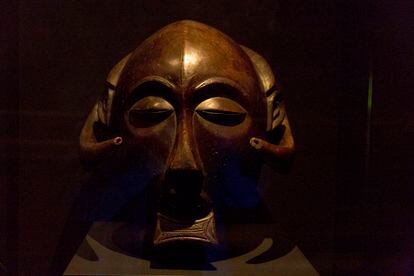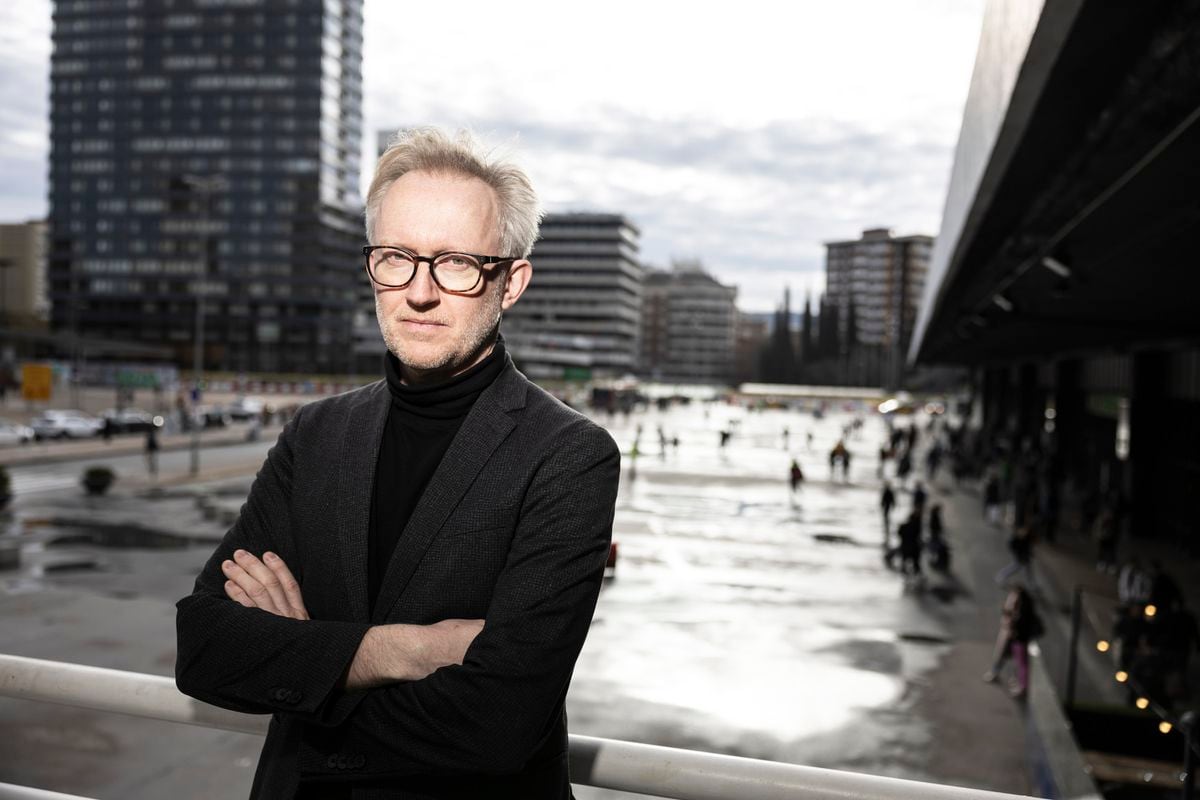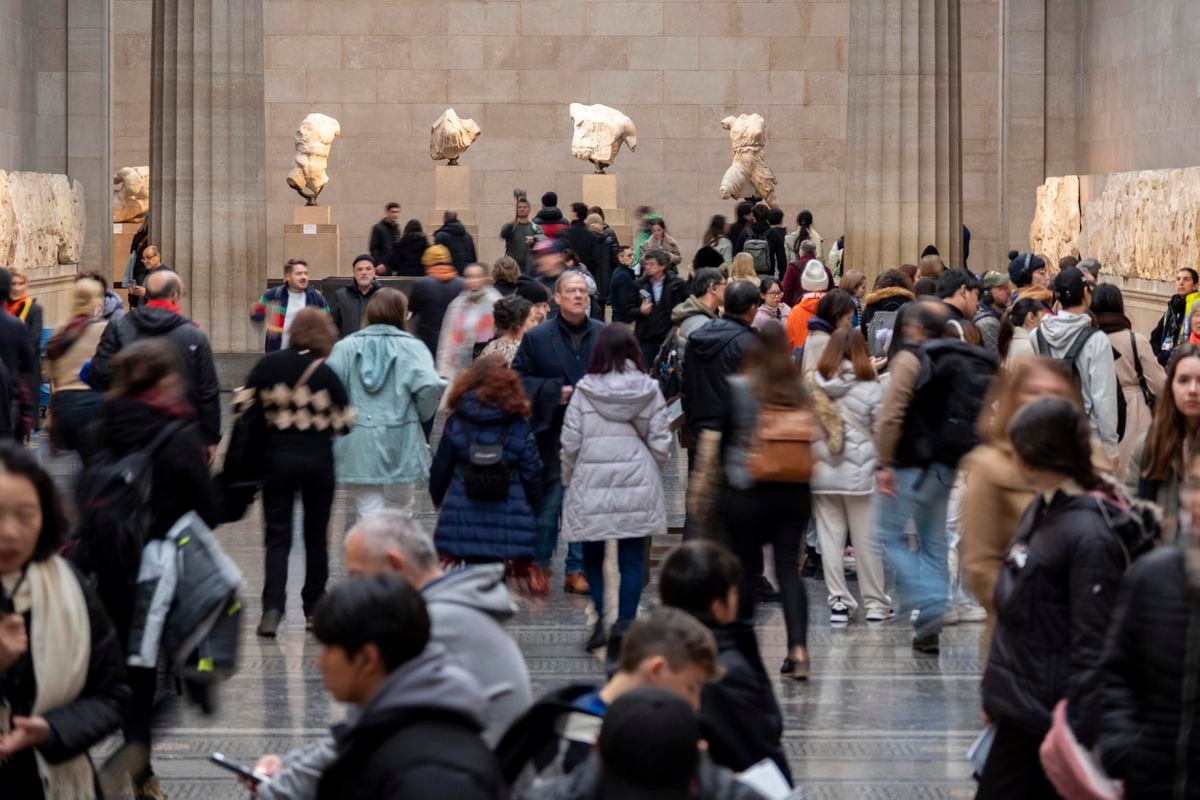The Nkisi Nkonde statue, one of the jewels that the Belgians looted in the Congo a little over a century ago, looks at the visitor to the Museum of Central Africa in Brussels with the same look of horror with which today we can contemplate the genocide led by the king Leopold II in what used to be his farmhouse: empty eyes that can be as terrifying as they are terrifying, his mouth open and his body sculpted from a mass of wood and nails that belonged to the tribal chief Ne Kuka, one of the nine kings of the city of Boma.
A fetish to which divine powers were attributed that the invaders took advantage of against the population.
Alexandre Delcommune, an officer of the fearsome Force Publique and trafficker, swept away in 1878 with this and other pieces of enormous symbolic value for the Congolese, one of the many trophies that the Belgians pillaged in the Congo while they also plundered the ivory of the elephants, the rubber trees and cut off the hands of those who did not comply with their forced labor.
Today, this piece is one of the jewels that the African Museum has taken care to document as accurately as possible with a view to its next return to Kinsasa.
"The decision has already been made and now we are seeing how it is implemented," says the museum's director, Guido Gryseels.
For this, a joint commission of the two countries is being formed.
"But now the Congo is going slower than Belgium, which would like to go faster."
Luba's mask, carved in wood, houses two buffalo horns, considered the most powerful animal in Africa.Delmi Alvarez
Gryseels retires at the end of the year, after experiencing firsthand the social transformation, the debates and the change in perception about colonialism that is taking place in Belgium, especially accelerated after Black Lives Matter.
Twenty years ago he took over a museum that exhibited the now shameful Belgian pride in its colonization of the Congo, currently considered one of the greatest collective crimes, especially after Adam Hochschild's book
The Ghost of King Leopold.
At that time, everything in this museum claimed how Belgium had brought "civilization, well-being or security" to that African territory;
it exhibited stereotypical statues of blacks in a barbaric, cruel, savage or humiliated and subdued gesture (which today rest underground);
and honored the personal leader of that genocide, Leopold II.
After keeping it closed for five years, the museum reopened in 2018 with a new reading of history that has placed it among those that are best adapting to a critical present with what happened.
Today, the Belgian and Congolese governments are working together to proceed with the restitution, after Belgium declared 84,000 pieces alienable after arduous work, probably the largest documentation effort made in a museum of this type.
“We have done a lot of research.
Sometimes we have found a lot of data about the origins of the pieces in the archives and we have sent scientists to the Congo to investigate two or three pieces for two or three months.
But we prefer to approach it collectively: if we document that a piece was looted, chances are that everything that came with it was too.
For many objects, you will never know.
Who knows if a gift to a missionary was for nothing or for a response, such as, 'I'll make sure your kids get into college.'
None of this is on record and we will never know the exact terms of the acquisition."
For this reason, says Gryseels, “once the illegal origin of the piece has been investigated, whether due to looting, the use of violence or delivery in unequal conditions, ownership is automatically granted to the Congo.”
applauded outrages
Let's look at what Delcommune himself said about the statue that he stole after the attack from eight of the nine kings of Boma and that the population considered a god: "I had known this fetish for a long time and also the great reputation it had in twenty or thirty leagues around.
I myself experienced it in circumstances that deserve to be recounted and that show the faith of the indigenous people in their gods,” the trafficker wrote.
Once in his hands, he used it to frighten the natives into denouncing his countrymen and to undermine the rule of tribal chiefs, thus depriving them of the power of his fetish.
“This statue is the international symbol of the need for restitution.
It belonged to a chief of a community in the Congo and a Belgian burned down a town to keep it and all the symbols of his power.
They must be returned."
One of the museum's showcases showing different masks from the Congo.
Demi Alvarez
He hopes to soon reach an agreement like the one that Germany has assumed to return to Nigeria a thousand pieces that belonged to the ancient kingdom of Benin, of which 40 are now on loan.
“What was stolen has to come back.
As long as the Congo wants it.
I think we will reach an agreement."
Luba's mask is another of the jewels whose origin the museum has accurately cataloged with a view to its restitution.
Carved in wood, the head houses two buffalo horns, considered the most powerful animal in Africa, and for the natives it grants powers to its owner.
It is considered to be invaluable.
"Some tribal chiefs resisted the Belgians and they stole these objects from them to take away their power," says Gryseels.
This was the case of this piece, looted in 1896 in Luulu, in the province of Katanga, by the troops of Commander Oscar Michaux, considered a hero in his time.
All this was documented by an officer, Albert Lapière, who accompanied him and who recorded in his diary all the outrages that were then applauded.
Thanks to that, history has been reconstructed.
Michaux amassed more than 700 pieces during his campaigns and, for lack of offspring, his widow sold the collection to the museum in 1919. Even then the military had been prohibited from taking over their own collections, but the abuses had already been committed.
Those were the times, for example, when the Belgians moved an entire village to display it as a human zoo in this museum.
Of the 267 native Congolese brought to Europe, seven died of cold and flu.
Their names are projected today at sunset on the stone panels in which there are a thousand Belgian "heroes" killed in those campaigns.
With a double meaning: to remember that they are victims of Belgium and to cast a shadow over the alleged martyrs.
Dr. Guido Gryseels, General Director of the African Museum in Tervuren, Belgium.Delmi Alvarez
"This was a colonial museum that disclosed that we were superior and that was the dominant feeling in society," says the director while showing the interventions that have been made to reopen it.
"Today's racism is in part due to white superiority that we've contributed to."
Another of the most important interventions was to cover the statues in which the deeds were glorified (“Belgium bringing civilization to the Congo”, “Belgium bringing well-being”, “security” or “the end of slavery”) with veils on the that two contemporary artists exhibit current messages: denouncing militarization, cruelty, imposition.
Walking through the museum, the director shows another of the sculptures of already documented provenance that may form part of the lots that are returned.
This is
Lusinga,
sacked by men under the command of the explorer Émile Storms in 1884, in an operation in which they beheaded a tribal chief named Lusinga, the one who had opposed the most resistance to his advance.
It represents the ancestors of him.
Storms not only took this piece, but also the heads of Lusinga and two other chiefs, Maribu and Mpampa, which he kept in his personal collection until they were donated to the museum in 1935. The human remains were transferred to the Natural History Museum, today Royal Belgian Institute of Natural Sciences, where they are still preserved!
The procedure for returning the pieces has an advance in the statue that kings Felipe and Matilde took last June to Kinsasa on the first royal trip to the former colony, where they "regretted" what happened, although without apologizing.
Until there a mask of the suku ethnic group was carried.
Its community of origin symbolically returned its magical powers to the piece.
Elephant that is preserved in the museum.
Demi Alvarez
Many other things can never be restored.
Neither the elephant hunted in 1956 that is on display in the museum (it actually took two to get a properly stuffed specimen), nor the entire population of these gigantic animals that they endangered, nor the lives of up to ten million Congolese that they killed .
Because, as a large sign at the beginning of the museum tour says, “everything passes except the past”.
Subscribe to continue reading
read without limits
Keep reading
I'm already a subscriber








